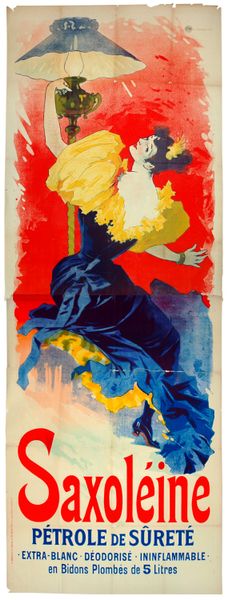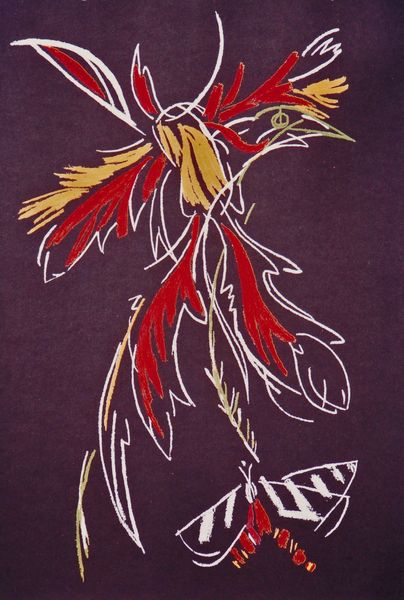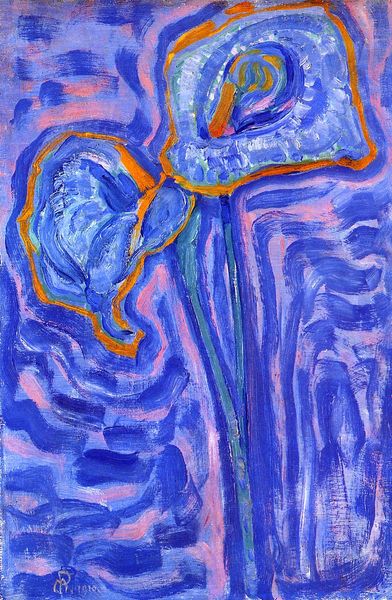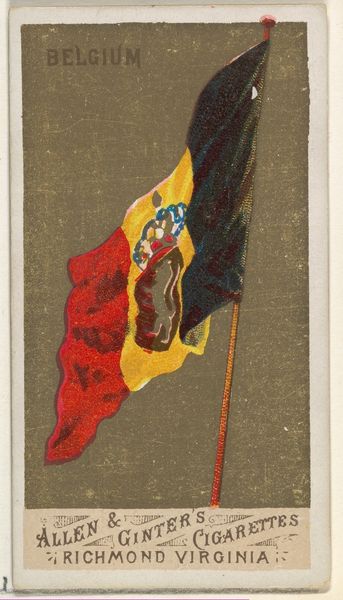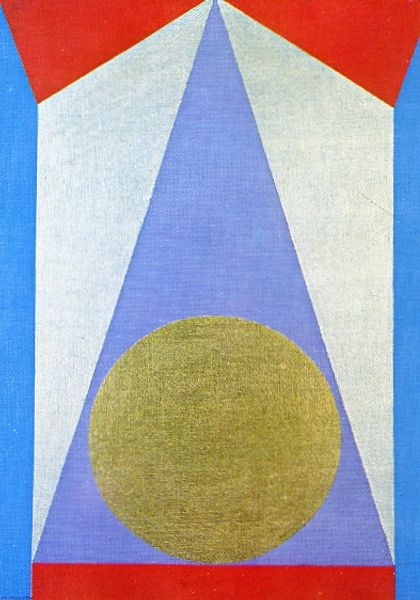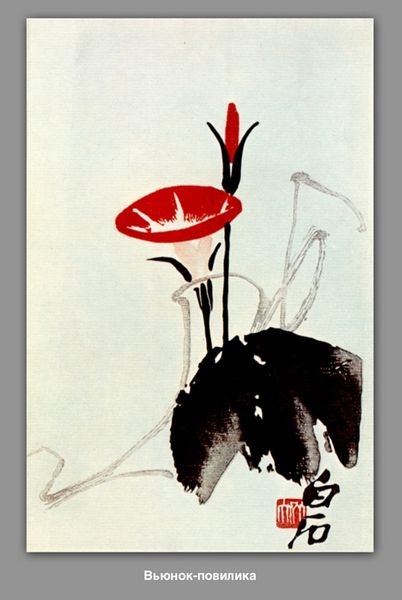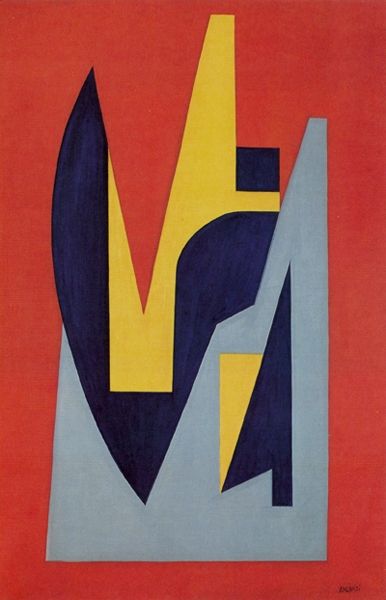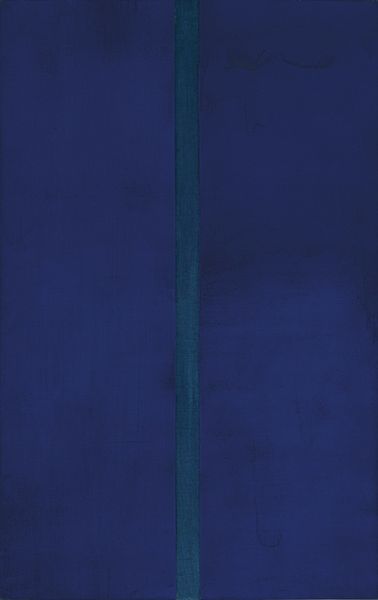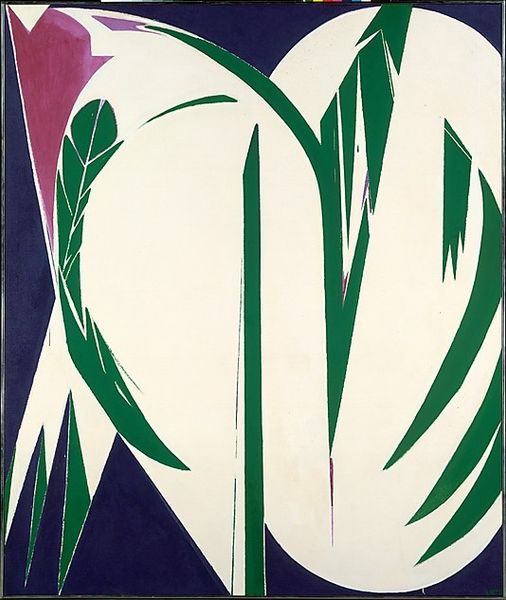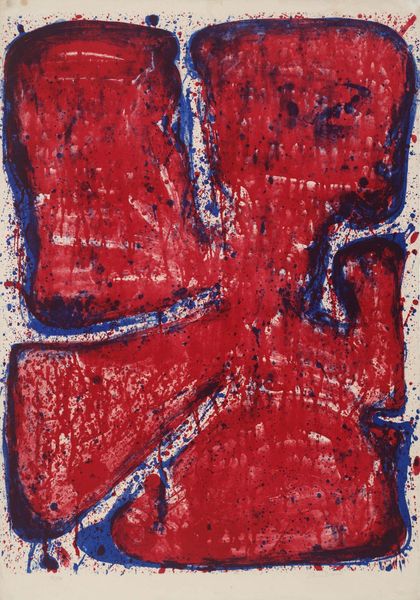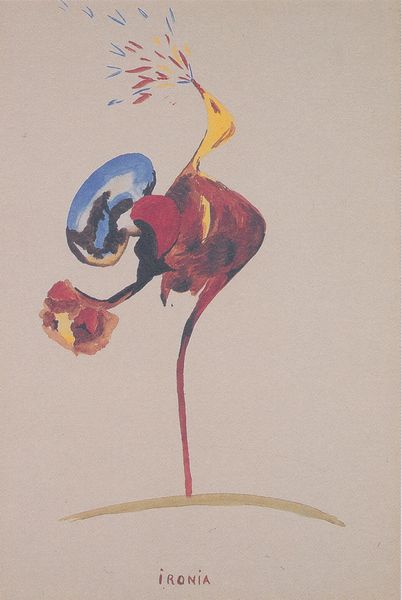
Dimensions: 49.2 x 31.5 cm
Copyright: Public domain
Curator: Piet Mondrian, better known for his abstract works, painted this ‘Amaryllis’ in 1910. The work in oil, shows two amaryllis flowers against an ultramarine backdrop. It's currently held in a private collection. Editor: It's quite striking, isn’t it? The blue nearly vibrates against the almost aggressively red petals. It feels... bold. Almost confrontational. Like it's demanding attention. Curator: Indeed. Although the colour palette might seem simplified to some, let’s think about Mondrian’s broader exploration of form. It reflects his ongoing interrogation of spiritual themes in nature. This ties to an emerging Dutch Symbolist movement focused on a personal visual vocabulary for transcendent experience. Editor: Transcendent experience, huh? Well, the stark lines of the stem, mimicking the sharp outline of the glass, combined with the flamboyant blossoms, kind of hints at a tension. It’s like the desire for wild abandon is grounded, forced to be rigidly upright and *proper.* You see what I mean? The bottle— the expectations! Curator: That's a very insightful interpretation. We might also view the subject from a feminist perspective. The amaryllis—a phallic symbol standing for both femininity and strength—rebels against the constraints of society. Notice that each is slightly distinct and tilted; the artwork highlights its individual complexities. This flower may also evoke feelings toward those whose expression falls outside the accepted parameters of heteronormative patriarchal paradigms. Editor: Whoa, heavy! I’m still tripping on those colours though. How does the vibrant background, that insistent blue, inform that perspective? It’s almost suffocating, you know? As if those flowers are desperate for a little breathing room from societal norms. Curator: Yes! Think about colour theory. The deep ultramarine elicits a sense of yearning. The artwork can thus represent social anxieties, longings, and pressures of conformity faced by women within early 20th century Dutch society. Editor: Right. I get it. So this flower-in-a-bottle gig turns out to be way deeper than just some pretty picture. It's whispering secrets, or maybe shouting them, about expectations, gender, and this burning need to break free. Cool. Curator: Exactly. It's another fascinating facet to Mondrian's complex worldview and how these social conditions were perceived by many other people, not just women. Editor: Makes you think about what's holding you back, doesn’t it? Both literally and metaphorically, there’s this pressure we receive, and it can affect every area of existence.
Comments
No comments
Be the first to comment and join the conversation on the ultimate creative platform.
